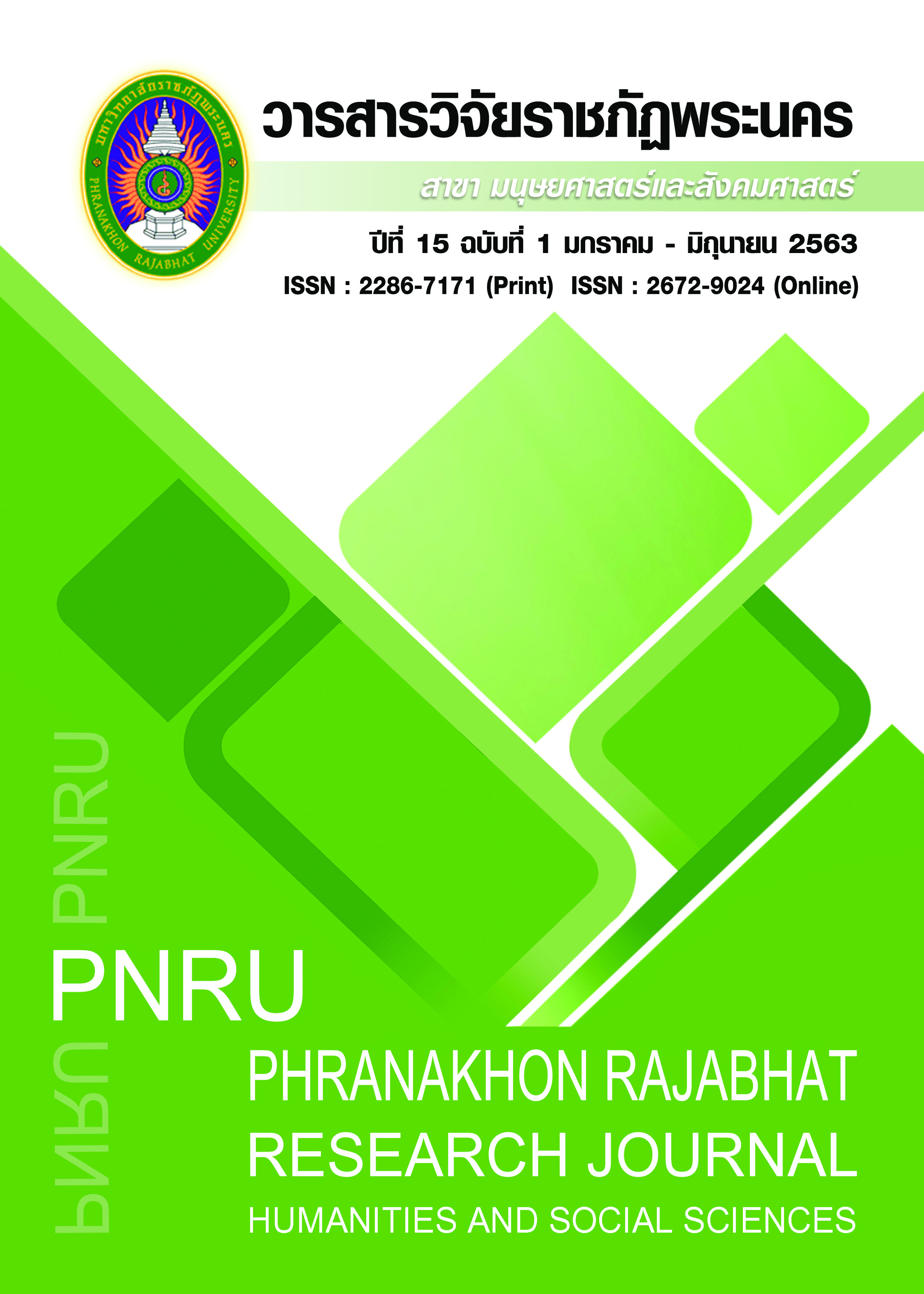THE EFFECTS OF ORGANIZATIONAL CAPABILITIES AND ITS ANTECEDENTS ON FIRM PERFORMANCE OF SMALL AND MEDIUM ENTERPRISES IN THAILAND
Main Article Content
Abstract
The purpose of this paper is to investigate the effects of the Management Team on the Organizational Culture, Organizational Capabilities and Firm Performance of small and medium enterprises in Thailand. The sample group by purposive sampling consisted of managers of SMEs with the standards of the Office of Small and Medium Enterprise Promotion (OSMEP). The total was one hundred and fifty-seven SMEs with five managers each. Quantitative data were collected using a questionnaire. The data were analyzed using descriptive statistics and the analysis of the structural equation model (SEM). Qualitative data were collected using the method of focus group discussions with seventeen managers from six enterprises to support the research conceptual framework. The results are as follows. 1) The Management Team exhibited positive and significant effects on the Organizational Culture, Organizational Capabilities and Firm Performance. 2) The Organizational Culture exhibited positive and significant effects on the Organizational Capabilities and Firm Performance. 3) The Organizational Capabilities exhibited positive and significant effects on the Firm Performance.
Article Details
Each publish articles were copyright by Phranakorn Rajabhat University
Any contents which appeared in each articles in the journal were authors personal opinion. It did not relate to Phranakorn Rajabhat University and other instructors in the university. Each authors would take responsibility on their articles. If there are any mistake, the authors will take responsibility themselves
References
Acar, F.P. (2016). The effects of top management team composition on SME export performance : an upper echelons perspective. Central European Journal of Operations Research, 24(4), 833-852.
Ahmadi, S.A.A., Salamzadeh, Y., Daraei, M. & Akbari, J. (2012). Relationship between organizational culture and strategy implementation: typologies and dimensions. Global Business and Management Research: an International Journal, 4(3), 286-299.
Barney, J.B. (1991). Firm resources and sustained competitive advantage. Journal of Management, 17(1), 99-120.
Baruch, Y. (1999). Response rate in academic studies-a comparative analysis. Human Relations, 52(4), 421-438.
Best, J. W. & Kahn, J. V. (1995). Research in education. 7th edition. New Delhi: Prentice Hall of India.
Cameron, K. S. & Quinn, R. E. (2006). Diagnosing and changing organizational culture. CA: John Wiley & Sons, Inc.
Colotta, I., Shi, Y. & Gregory, M. (2003). Operation and performance of international manufacturing networks. International of Journal Operations and Productions Management, 23(10), 1184-1206.
Deborah, M.B., Mayowa, A.G. & Grace, A.C. (2015). Organizational culture and performance. Africa Leadership Development Center, Covenant University, Ota, Nigeria, In: 2nd Covenant University Conference on African Development Issues (CU-ICADI), 11th - 13th May, 2015, 101, 297-300.
Diamantopoulos, A. & Siguaw, A.D. (2000). Introducing Lisrel : a guide for the uninitiated. London: Sage Publications.
Ehtesham, U.M., Muhammad, T. M. & Muhammad, S. A. (2011). Relationship between organizational culture and performance management practices: a case of university in Pakistan. Journal of Competitiveness, 4(3), 78-89.
Fernandez, M.C.D., Rodríguez., M.R.G., Simonetti, B. (2015). Top management team’s intellectual capital and firm performance. European Management Journal, 33(5), 322-331.
Grant, R.M. (1991). The resource based theory of competitive advantage: implications for strategy formulation. California Management Review, 33(3), 114-135.
Hambrick, D.C., & Mason, P.A., (1984). Upper echelons: the organization as a reflection of its top managers. Academy of Management Review, 9(2), 193-206.
Kabir, S.M.S. (2016). Basic guidelines for research: an introductory approach for all disciplines. Chittagong: Book Zone Publication.
Katkalo, V.S., Pitelis, C.N. & Teece, D.J. (2010). On the nature and scope of dynamic capabilities. Industrial and Corporate Change, 19( 4), 1175-1186.
Ministry of Industry. (2016). Industrial development strategy 4.0 (2017-2036), Bangkok: Office of the Permanent Secretary, Ministry of Industry. (in Thai)
Nedzinskas, S., Pundziene, A., Rafanaviciene, B.S. & Pilkiene, M. (2013). The impact of dynamic capabilities on SME performance in a volatile environment as moderated by organizational inertia. Baltic Journal of Management, 8(4), 376-396.
Office of Small and Medium Enterprise Promotion (OSMEP).(2016). SME master plan No.4 (2017-2021). Bangkok: OSMEP. (in Thai)
Penrose, E. T. (1959). The theory of the growth of the firm. New York: John Wiley.
Petchroj, L., Angsuchoti, S. & Chamniprasar, A. (2012). Statistics for research and SPSS application techniques. 2nd edition. Bangkok: Charoendee Munkong Printing. (in Thai)
Rovinelli, R. J. & Hambleton, R. K. (1977). On the use of content specialists in the assessment of criterion-referenced test item validity. Dutch Journal of Educational Research, 2, 49-60.
Tsao, W., & Chang, H. (2010). Exploring the impact of personality traits on online shopping behavior. African Journal of Business Management, 4(9), 1800-1812.


